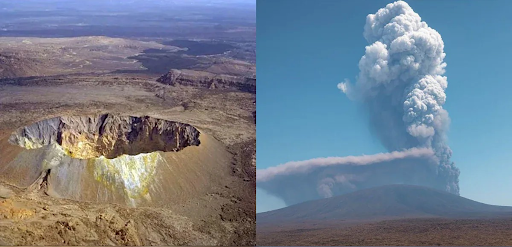



The full potential of Community Forest Rights under the FRA is stalled by departmental resistance, legislative dilution, and lack of community awareness, necessitating a mission-mode push with technology and coordinated governance to empower Gram Sabhas and correct historical injustices.

Copyright infringement not intended
Picture Courtesy: THEHINDU
Implementation of the Forest Rights Act (FRA) of 2006, especially the recognition of Community Forest Rights (CFR), has been slow and challenging, hindering democratic forest governance and community empowerment.
|
Read all about: Forest Rights Act (FRA) l Community Forest Rights l India's Fra Stands Apart From Exclusionary Laws Globally l Supreme Court Directs To Reclaim Reserved Forest Lands |
The Scheduled Tribes and Other Traditional Forest Dwellers (Recognition of Forest Rights) Act, 2006, commonly known as the Forest Rights Act (FRA), aimed at correcting the "historical injustice" done to forest-dwelling communities.
It legally recognizes the rights of these communities over the land and resources they have traditionally managed.
The act recognition of Community Forest Rights (CFR) empowers communities with collective ownership and governance authority over forests.

|
Types of Forest Rights under FRA |
||
|
|
Individual Forest Rights (IFR) |
Community Forest Rights (CFR) |
|
Beneficiary |
Individual or family |
Community or Gram Sabha |
|
Nature of Right |
Right to hold and live in forest land for habitation or self-cultivation. |
Collective right to protect, manage, regenerate, or conserve community forest resources. |
|
Scope |
Limited to a specific parcel of land occupied by the individual/family (up to 4 hectares). |
Covers a larger, customary forest landscape, including rights over Minor Forest Produce (MFP), grazing grounds, and water bodies. |
|
Governing Body |
Title is held individually. |
The Gram Sabha is empowered as the statutory decision-making body for forest management. |
Correcting Historical Injustice
Colonial laws like the Indian Forest Act, 1927, classified forest dwellers as "encroachers" on their ancestral lands. The FRA, and particularly CFR, legally restores their traditional authority and rights over these territories.
Strengthening Democratic Governance
CFR empowers the Gram Sabha as the primary authority for forest governance, aligning with the principles of decentralization under the 73rd Constitutional Amendment and the PESA Act, 1996.
Economic Empowerment
It grants communities legal rights to manage, use, and sell Minor Forest Produce (MFP), a vital source of income. The rights also reduce dependence on exploitative middlemen.
Enhancing Forest Conservation
Legally empowered local communities are highly effective forest custodians, as their traditional ecological knowledge promotes biodiversity and sustainable resource use.
A 2023 study on the Brazilian Amazon found that by ensuring land rights for Indigenous Peoples could see deforestation rates fall by 66%. (Source: UN-Redd)
Institutional Resistance from the Forest Department
Dilution through Conflicting Laws
Lack of Awareness and Capacity
Many forest communities are unaware of detailed CFR provisions. Mapping boundaries and documenting claims is difficult, and Gram Sabhas lack necessary technical and financial support.
Development vs Conservation Conflict
Forest land diversion for mining, dams, and infrastructure is a major challenge, but the FRA offers communities a strong legal tool to assert their rights.
|
Case Study: Niyamgiri Hills, Odisha
|
Empower the Gram Sabha
Conduct large-scale capacity-building programs to train Gram Sabha members in mapping their resources, preparing management plans, and understanding their legal rights.
Leverage Technology:
Use GIS mapping, GPS, and mobile applications to help communities accurately demarcate their traditional boundaries. This creates a transparent and undeniable record for their claims.
Ensure Convergence of Schemes
Integrate CFR management plans with other government programs. Funds from MGNREGA can be used for forest restoration, while the National Rural Livelihood Mission (NRLM) can help build enterprises around value-added MFP.
Strengthen Nodal Agencies
The Ministry of Tribal Affairs (MoTA) must take a more proactive role, strictly monitoring implementation, resolving conflicts with the Forest Department, and ensuring District and Sub-Divisional Level Committees process claims promptly.
Effective implementation of the Forest Rights Act (FRA) is essential for realizing both social justice and India's Sustainable Development Goals (SDGs) and Paris Agreement climate commitments by empowering marginalized communities and enhancing conservation efforts.
Source: THEHINDU
|
PRACTICE QUESTION Q. What are Community Forest Rights (CFR) under the Forest Rights Act, 2006? Critically examine the challenges in the recognition and implementation of these rights. 150 words |
Individual Forest Rights (IFR) grant rights to an individual or family over a specific parcel of land they have been cultivating or inhabiting. In contrast, Community Forest Rights (CFR) recognize the collective authority of the entire community, through its Gram Sabha, over a larger traditional forest landscape to manage, protect, and use its resources sustainably.
The Act aims to grant forest rights and occupation of forest land to Scheduled Tribes and other traditional forest dwellers, correcting the "historical injustice" that previously denied them resource access and treated them as encroachers despite generations of residence.
In the 2013 Niyamgiri Hills case, the Supreme Court mandated Gram Sabha consent for diverting forest land. It empowered the Dongria Kondh tribe's Gram Sabhas, whose unanimous rejection halted a mining project, establishing the Gram Sabha's decision-making supremacy under the FRA.







© 2025 iasgyan. All right reserved